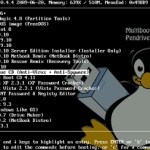How-To: XBMC 11 the XBMCbuntu way
For all intents and purposes, the original Xbox, with its NVIDIA GPU, 8-10GB hard disk and custom Pentium III processor was a high-end PC for its time — albeit, one that connected to a television. What Microsoft didn’t realize back then, though, was that when you put that kind of hardware in the hands of hackers and enthusiasts, it’s only a matter of time before people start doing more than just playing Halo. Fast forward to 2003, the year the Xbox Media Center was born. Nowadays, it’s simply referred to as XBMC, since it runs on more than just your Xbox. In brief, XBMC is an open-source software solution that enables a plethora of media streaming capabilities on all sorts of devices. What once was limited to the original Xbox, can now be put to use on everything from a bare-bones Linux desktop to an Apple TV. In this how-to, we’ll show you how to build a simple XBMC setup using XBMCbuntu. Catch us after the break for the full step-by-step.
Most Popular Linux Downloads and Posts of 2010
Most Popular Linux Downloads and Posts of 2010
It may not be the most popular operating system around, but we still love Linux around these parts (and we know you do too). Here are some of our favorite Linux downloads and posts from the past year.
Lifehacker Pack for Linux: Our List of the Best Linux Downloads

Linux hasn’t always had the best rep as far as ease of use, but us Linux fans at Lifehacker wanted to prove the naysayers wrong by including Linux in this year’s round of Lifehacker packs. We rounded up some of the best Linux apps for getting things done and making your desktop great.
Turn a Pogoplug into a Fully-Featured Linux Web Server
 Pogoplugs are great little storage devices, but they can do more than they let on. Let’s take a look at how you can hack a Pogoplug into a LAMP (Linux, Apache, MySQL, PHP) web server.
Pogoplugs are great little storage devices, but they can do more than they let on. Let’s take a look at how you can hack a Pogoplug into a LAMP (Linux, Apache, MySQL, PHP) web server.
This is a fun little project, but it does take some time and patience. Be sure to set aside a few hours this weekend to get it up and running. That said, let’s get started!
The video above will take you through the entire process, which is mostly based on the great tutorials at plugapps.com. The video won’t cover backing up your Pogoplug, which is something you should probably do, and also how to install NginX in place of Apache.
Top 10 USB Thumb Drive Tricks

What can you do with a few gigabytes and a USB port? Quite a lot, with the right software. Learn how to encrypt your work, run whole systems, rescue Windows, and customize your thumb drive with these USB-geared tricks.
Photo by Debs (ò‿ó)♪.
Note: Gina previously rounded up 10 thumb drive tricks in April 2007, and we’ve borrowed a few of those ideas here. But many of the apps have updated, some have been replaced with better offerings, and a few totally new cool things (Chrome OS! XBMC!) have made their way into this mix.
MultiBootISOs Boots Multiple Operating Systems from a USB Drive
Windows: Can’t decide whether you should commit your spare thumb drive to Windows recovery, Ubuntu, or some other live-booting OS? Run MultiBootISOs on your USB drive, and you won’t have to choose—you’ll just choose between them at start-up.
The folks at PenDriveLinux.com have created a Windows tool for creating what is basically a GRUB multi-OS bootloader on your USB drive, along with a nice long list of systems that work with it. All you have to do is grab an ISO file of the system you’re adding to your drive, then drop the whole ISO file onto the drive (occasionally with special instructions). There’s all the usual Linux cohorts—Ubuntu, Fedora, openSUSE, etc.—but also some great rescue tools and utilities, like the GParted partition disc, Ophcrack password reset, and virus scanners. You could even load a Windows 7 installation DVD onto your thumb drive, if you had the room.
Copyright © 2010-2024 I am G33K… All rights reserved.
This site is using the Desk Mess Mirrored theme, v2.5, from BuyNowShop.com.



